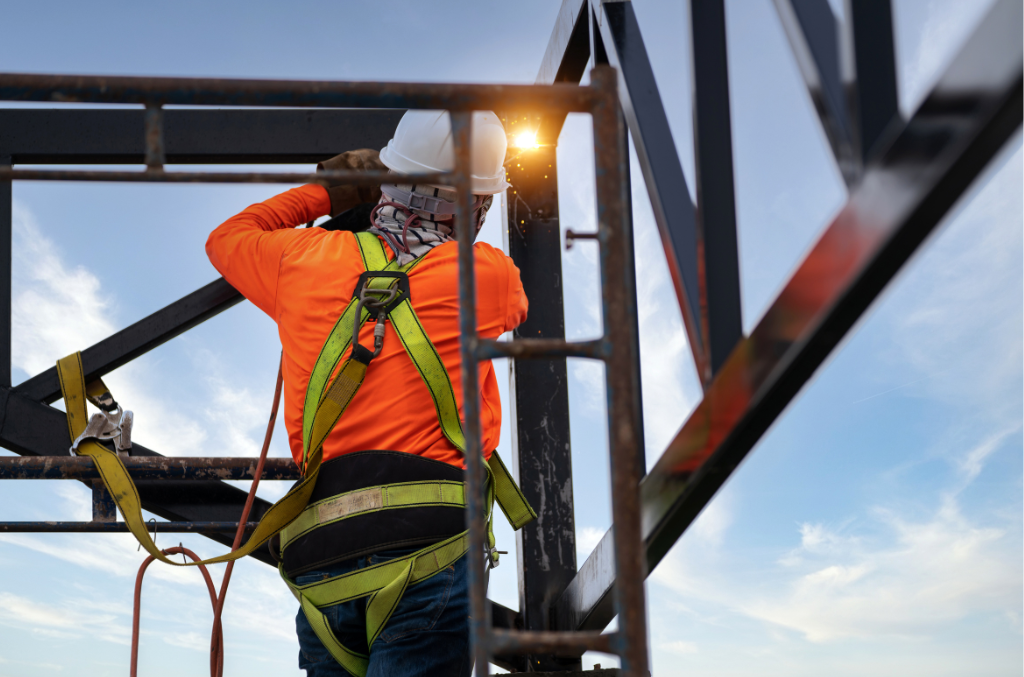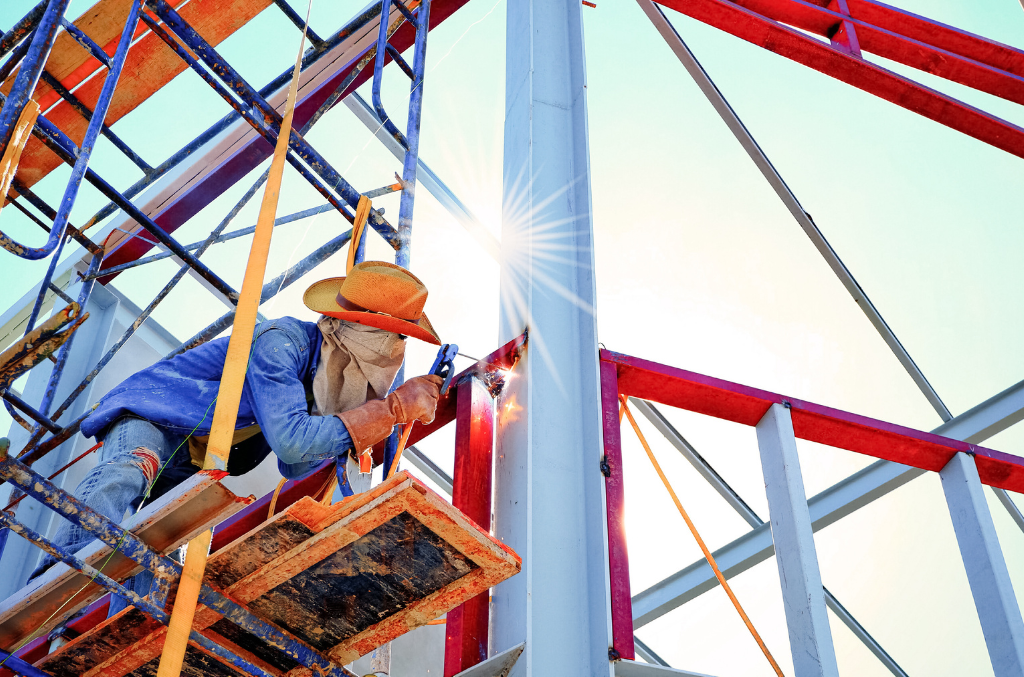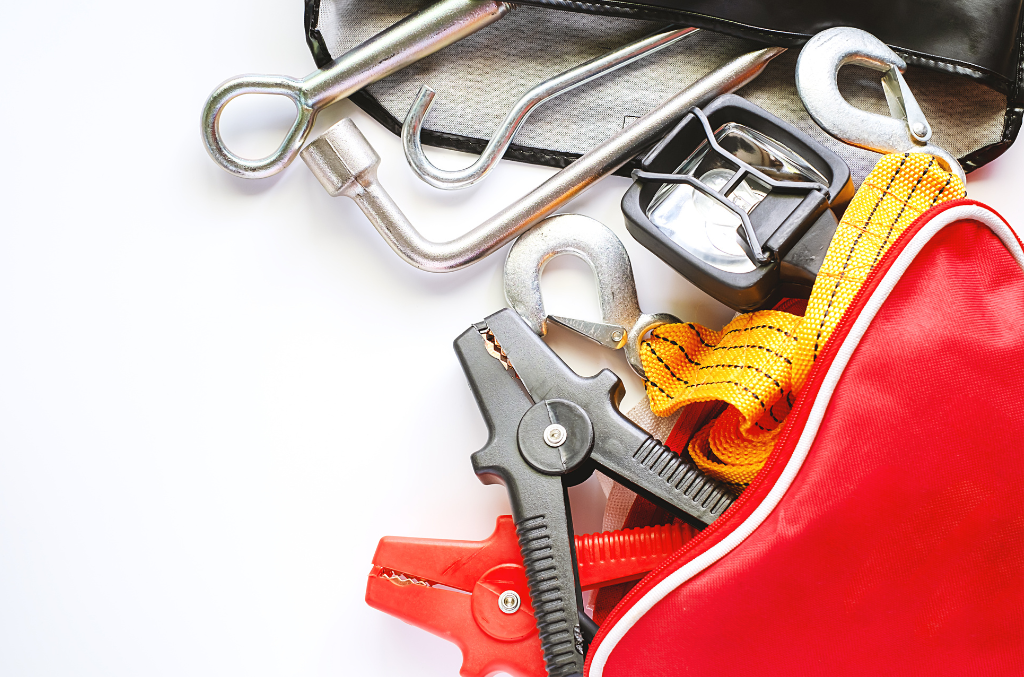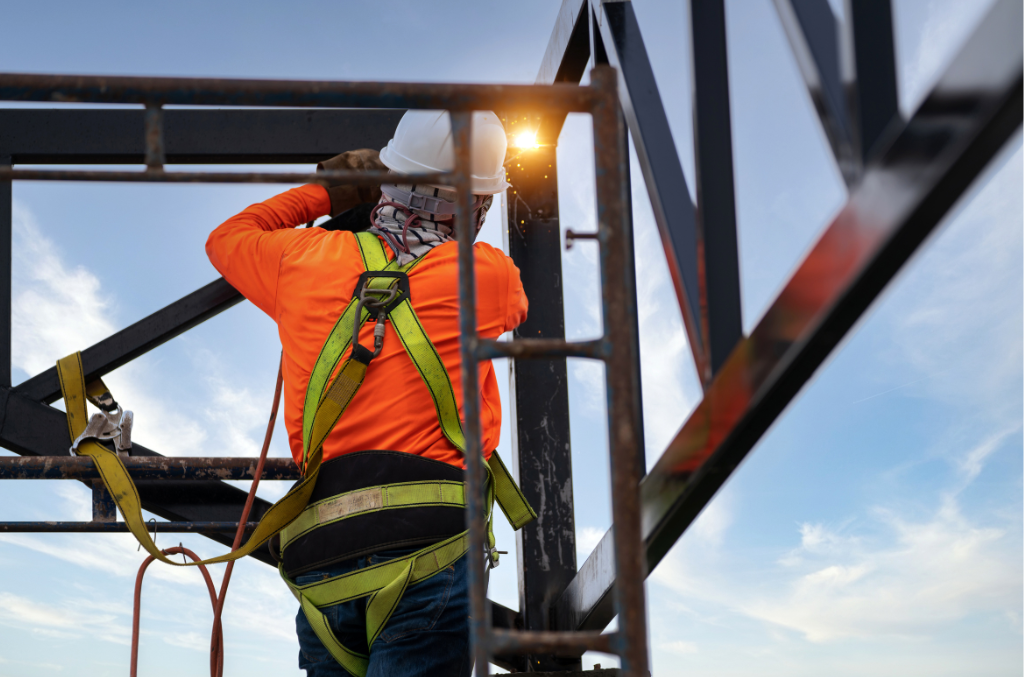Fall Protection Kits
Fall Protection Kits: Essential Safety Gear for Every Industry
Fall Protection Kits are critical safety equipment designed to prevent injuries and fatalities from falls in various industries. They typically consist of a full-body harness, a lanyard or self-retracting lifeline, and an anchorage point. These kits are designed to arrest a fall by distributing the force across the wearer’s body, significantly reducing the risk of serious injury.
Falls from height are a leading cause of workplace fatalities, making fall protection kits an essential part of any safety program where workers operate at elevated heights. These kits offer a comprehensive solution, providing the necessary equipment to ensure safe work at height in one convenient package.
Table of Contents
Why Fall Protection Kits are Indispensable
The importance of fall protection cannot be overstated. Fall protection kits are indispensable in industries where work at height is a common part of the job, such as manufacturing, distribution, healthcare, education, and building services.
Workers are at a high risk of severe injuries or even death without proper fall protection. Fall Protection Kits not only provide the necessary safety measures to protect workers from such risks, but they also help employers comply with Occupational Safety and Health Administration (OSHA) regulations, which mandate the use of fall protection in certain industries and circumstances.
Moreover, using fall protection kits can significantly reduce downtime related to accidents and improve productivity. A safe worker is a productive worker, and with the right fall protection equipment, you can ensure that your employees can perform their tasks effectively and safely. In short, a small investment in fall protection can save lives, prevent injuries, and ultimately boost your bottom line.
Understanding Different Types of Fall Protection Kits

When it comes to fall protection, one size does not fit all. Different job sites and tasks require different types of fall protection kits. Understanding these kits’ various components and functions can help you select the right kit for your specific needs.
Full Body Harnesses: The Backbone of Fall Protection Kits
A full-body harness is the most critical component of a fall protection kit. It serves as the primary support mechanism that distributes the force of a fall across the wearer’s body, minimizing the risk of injury. Harnesses should be comfortable and adjustable, ensuring a snug fit without impeding movement. Most importantly, they should meet or exceed the safety standards of regulations like OSHA.
Self-Retracting Lifelines and Lanyards
Self-retracting lifelines and lanyards are designed to connect the harness to the anchorage point. They act as a tether, limiting the distance a worker can fall. Self-retracting lifelines offer added safety by automatically stopping a fall within a few inches, whereas lanyards may allow a longer fall before arresting it. The choice between the two often depends on the work environment and task specifics.
Anchorage Points and Rescue Devices
Anchorage points are a crucial part of the fall protection system. They provide a secure point of attachment for the lifeline or lanyard. The strength and stability of the anchorage point are paramount, as it must withstand the force of a fall.
On the other hand, rescue devices are used to retrieve a worker who has fallen and is suspended in a harness. These devices are critical in preventing suspension trauma, a potentially life-threatening condition that can occur when a person is suspended upright for too long.
Each component of a fall protection kit plays a vital role in ensuring worker safety. Understanding these components and their functions is the first step towards choosing the right fall protection kit for your needs.
The Science Behind Fall Protection Kits
In order to fully appreciate the effectiveness of fall protection kits, it’s essential to understand the basic physics behind falls and how these kits work to prevent injuries.
Understanding the Physics of Falls
When a person falls from a height, two main forces come into play: gravity and the impact force. Gravity pulls the person downwards, and the speed of the fall increases due to acceleration. The impact force is the force exerted on the person when they suddenly stop falling, such as when they hit the ground or when a fall protection system arrests the fall.
The goal of a fall protection kit is to manage these forces. The kit does not eliminate the forces; rather, it distributes and dissipates them to minimize the risk of injury.
How Fall Protection Kits Prevent Injuries
Fall protection kits use a combination of components to mitigate fall risks. The full-body harness distributes the force of the fall across the body, reducing the impact on any single point. The lanyard or self-retracting lifeline absorbs some of the fall’s energy, further reducing the force exerted on the person.
In addition, the anchorage point provides a secure attachment that can withstand the force of the fall. If a worker does fall, the rescue devices included in the kit can prevent further injuries caused by suspension trauma.
In essence, the science behind fall protection kits lies in controlling the forces involved in falls. By understanding these forces and how fall protection kits manage them, we can better appreciate their crucial role in ensuring worker safety.
Industry Applications

Fall protection kits are not industry-specific; they find applications in a wide range of industries where work at elevated heights is part of the job. Here, we explore how these kits play a vital role in different sectors.
Fall Protection in Manufacturing and Distribution
In manufacturing and distribution facilities, workers often need to access high shelves, operate heavy machinery, or work on elevated platforms. Fall protection kits are essential in these environments to prevent falls from height, which can result in serious injuries or fatalities.
Importance of Fall Protection in Healthcare
While it may not be immediately apparent, fall protection kits also have their place in healthcare facilities. Maintenance staff in hospitals and other healthcare institutions often work at heights, whether it’s for repairing HVAC systems, changing light bulbs, or maintaining other parts of the facility. In such scenarios, a fall protection kit can be a lifesaver.
Role of Fall Protection in Education Institutions
Schools, colleges, and other education institutions also require maintenance and repair work at height. Whether it’s cleaning windows, repairing roofs, or maintaining electrical systems, staff can benefit from the safety provided by fall protection kits.
Fall Protection in Building Services
Building services such as window cleaning, exterior painting, and facade maintenance often involve working at great heights. Fall protection kits are indispensable in these industries, protecting workers from potential falls and ensuring they can carry out their tasks safely.
Regardless of the industry, a fall protection kit is non-negotiable if a job involves working at heights. It’s a vital investment that ensures the safety of workers, compliance with safety regulations, and the smooth operation of daily tasks.
Tips for Choosing the Right Fall Protection Kit
Selecting the right fall protection kit is a critical decision that can directly impact the safety of workers. Here are some essential tips to help you make the right choice.
Understanding Your Unique Needs
Every work environment is unique, and so are the safety needs. Consider the specific tasks your workers perform, the height they work, and the potential hazards they may encounter. This will help you understand what type of fall protection kit you need. For instance, if your workers operate in confined spaces, you might need a kit with a specialty harness and retrieval device.
Key Features to Look for in a Fall Protection Kit
When selecting a fall protection kit, several key features must be considered. The harness should be comfortable, easy to wear, and adjustable to fit different body sizes. The lanyard or self-retracting lifeline should be of an appropriate length and strength for the working height and weight of the worker.
The anchorage point must be strong enough to withstand the force of a fall. And don’t forget about rescue devices – they are vital for safety in case of a fall. Finally, ensure that the kit meets all necessary safety standards and regulations.
Choosing the right fall protection kit is not just about purchasing equipment. It’s about understanding your work environment’s specific needs and ensuring your workers’ safety. With the right kit, you can significantly reduce the risk of fall-related injuries and ensure a safer workplace.
Proper Usage and Maintenance of Fall Protection Kits

Having a fall protection kit is only the first step. Knowing how to use and maintain it properly is equally important. Here’s a guide to help you.
Step-by-Step Guide to Using Fall Protection Kits
- Start by inspecting all the components of the kit for any signs of wear, damage, or malfunction. Never use a kit with damaged parts.
- Put on the full-body harness, ensuring that all straps are adjusted correctly for a snug, comfortable fit.
- Connect the lanyard or self-retracting lifeline to the harness’s D-ring, ensuring a secure attachment.
- Attach the other end of the lanyard or lifeline to a secure anchorage point. Make sure the anchorage point is strong enough to bear the force of a fall.
- Perform your tasks, remembering to move carefully and deliberately. If a fall occurs, the kit should arrest the fall and distribute the force across the body.
Maintenance and Regular Inspection of Your Kit
Regular maintenance and inspection of your fall protection kit are crucial to ensure its effectiveness. All components should be inspected for damage or wear before each use. Any parts showing signs of damage, corrosion, or excessive wear should be replaced immediately.
Furthermore, the kit should be cleaned regularly following the manufacturer’s instructions. Harsh chemicals or cleaning agents should be avoided as they can compromise the integrity of the kit’s components.
Remember, a well-maintained fall protection kit is a reliable one. Proper usage and regular maintenance not only extend the life of your kit but also ensure it performs effectively when it’s needed the most.
Regulatory Aspects of Fall Protection Kits
Fall protection is not just a matter of good practice; it’s a legal requirement in many industries. Understanding fall protection regulations can help you ensure compliance and maintain a safe workplace.
OSHA Regulations on Fall Protection
The Occupational Safety and Health Administration (OSHA) sets out specific regulations for fall protection in the United States. According to OSHA standards, employers must provide fall protection for employees working at heights of six feet or more in the construction industry and four feet or more in the general industry.
Fall protection can include guardrails, safety nets, or personal fall arrest systems, such as fall protection kits. OSHA also mandates that fall protection equipment must meet specific safety standards regarding strength, wear, and corrosion resistance.
Importance of Compliance with Safety Standards
Compliance with safety standards and regulations is not just about avoiding penalties and fines. It’s about creating a safe working environment where employees can perform their tasks without fear of injury.
Failure to comply with safety regulations can result in severe consequences, including workplace accidents, legal penalties, and damage to the company’s reputation. On the other hand, compliance demonstrates a commitment to worker safety, boosting employee morale and productivity.
In conclusion, understanding and adhering to the regulatory aspects of fall protection kits is essential. Not only does it help you maintain a safe and compliant workplace, but it also shows your commitment to protecting your most valuable asset – your employees.
Different Brands of Fall Protection Kits
The market offers various fall protection kits from various brands, each with unique features and strengths. Here, we review some of the top brands in the market and what sets them apart.
Reviewing Top Brands in the Market
3M DBI-SALA: Known for their innovative and high-quality products, 3M DBI-SALA offers a wide range of fall protection kits. Their kits often include features like easy-to-use self-retracting lifelines, comfortable harnesses, and durable anchorage connectors.
Miller by Honeywell: Miller is another leading brand in the fall protection industry. Their kits are known for their durability, comfort, and safety features. They offer a variety of kits to suit different industries and applications.
Guardian Fall Protection: Guardian offers fall protection kits that are easy to use and competitively priced. Their kits are versatile and reliable, making them a popular choice in various industries.
MSA Safety: MSA Safety offers fall protection kits that are designed with the user’s comfort and safety in mind. Their kits often include features like easy-to-adjust harnesses and lightweight, yet strong, lanyards.
What Sets Each Brand Apart
While all these brands offer high-quality fall protection kits, what sets them apart is their unique selling propositions. 3M DBI-SALA is known for its innovative designs, Miller for its durability, Guardian for its versatility and affordability, and MSA Safety for its focus on user comfort.
When choosing a brand, consider factors such as your specific needs, budget, and the kit’s intended use. Remember, the best fall protection kit is the one that meets your unique needs and ensures the safety of your workers.
Summary Of Discussion
Summing up the Importance of Fall Protection Kits
Fall protection is not just a compliance requirement; it’s a critical aspect of workplace safety. Fall protection kits are vital in preventing serious injuries and fatalities in various industries. They provide a comprehensive solution to protect workers operating at heights, offering peace of mind to both employers and employees.
Final Thoughts on Choosing and Maintaining Your Kit
Choosing the right fall protection kit involves understanding your unique needs, reviewing different brands, and ensuring the kit meets all safety standards. Once you have the right kit, proper usage and regular maintenance are essential to ensure its effectiveness.
Remember, the value of a fall protection kit goes beyond its cost. It’s an investment in safety, productivity, and compliance. By understanding fall protection kits’ components, application, and maintenance, you can make an informed decision and create a safer work environment.
In conclusion, fall protection kits are an essential tool in any industry where work at height is a common part of the job. With the right kit, you can ensure a safer workplace and demonstrate your commitment to employee safety.
Frequently Asked Questions (FAQ)
IP Products offers a wide range of Fall Protection Kits to meet your needs. Browse our collection today and find the perfect Fall Protection Kits for your job. We are dedicated to quality, customer satisfaction, and fast shipping.

